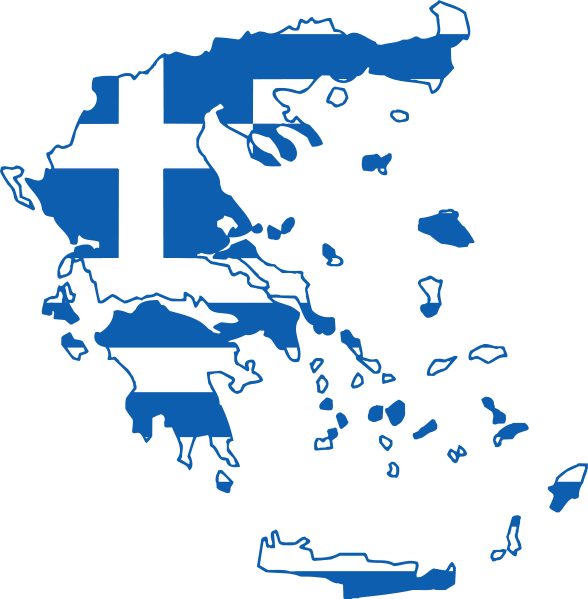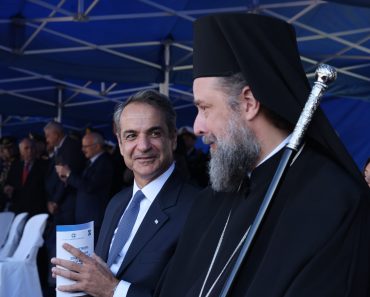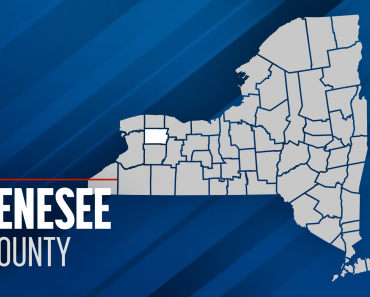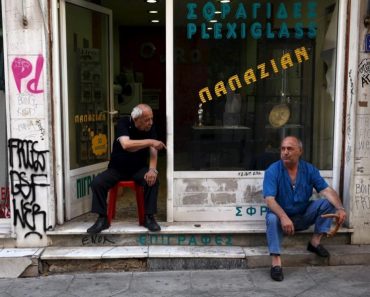Qatar Emiri Air Force Eurofighter Typhoon fighter aircraft perform aerial maneuvers in the sky above Qatar’s capital Doha as the Gulf state marks its National Day on December 18, 2021. – Qatar annually on December 18 marks the anniversary of the unification of the country’s tribes in 1878, also known as its “Founder’s Day”. (Photo by AFP) (Photo by -/AFP via Getty Images)
AFP via Getty Images
Turkish President Recep Tayyip Erdogan visited his country’s close ally Qatar on Wednesday, signing a series of agreements, including on defense, with Qatari Emir Tamim bin Hamad Al Thani. Ahead of his visit, reports indicated he also wants to buy Qatar’s Eurofighter Typhoon jets as a way of speeding up Turkey’s procurement of that advanced 4.5-generation fighter jet. In recent years, Turkey’s rival Greece has gained a qualitative air power advantage through its acquisition of Dassault Rafale jets from France. Therefore, Turkey aims to acquire a comparable fighter as quickly as possible.
Any sale of second-hand Eurofighters from Qatar to Turkey would require the authorization of all member countries of the consortium that developed the Typhoon, Britain, Germany, Italy, and Spain. According to Middle East Eye, which first reported on Turkey’s interest in buying Qatar’s Eurofighters early this month, the consortium supports the potential sale.
Turkey wants 40 Eurofighters as a 4.5-generation stopgap for its air force until it finishes its indigenous stealth fighter, the TF Kaan, and acquires fifth-generation F-35 Lightning IIs from the United States. According to AFP, Turkey has already offered Qatar a “potential technology transfer arrangement” for the Kaan in return.
Bloomberg reported that Turkey seeks all 24 of Qatar’s Eurofighter Tranche 3A aircraft. Ankara will purchase 16 additional advanced Tranche 4 models, all brand new. However, Reuters reported that Turkey is seeking 12 used fighters from Qatar and Oman “to meet its immediate needs.” If that’s the case, then Ankara would only buy part of the Qatari fleet, which Doha could readily replace, possibly even with newer Tranche 4s. Britain reportedly supports the Turkey-Qatar deal, likely because it is confident that Doha will order an equivalent number of new Eurofighters to replace any it does ultimately sell to Turkey.
By buying second-hand, Turkey can acquire and begin operating these ex-Qatari jets years before the factory-fresh Tranche 4s arrive.
Greece made a similar arrangement with its Rafales. It initially ordered 18 jets, consisting of 12 second-hand ex-French Air Force Rafale-Cs modernized to the Rafale F3R standard, and six newly-built ones, in January 2021. Since then, it ordered another six new ones, receiving the final one earlier this year.
Hellenic Air Force Rafale jets fly over the Parthenon and the Acropolis during the military parade marking Greece’s Independence Day in Athens on March 25, 2025. (Photo by Theophile Bloudanis / AFP) (Photo by THEOPHILE BLOUDANIS/AFP via Getty Images)
AFP via Getty Images
In a comment that seems richly ironic in light of Turkey’s present procurement process, former Turkish Defense Minister Hulusi Akar criticized Greece’s air power buildup when he said, in July 2021, “It is not possible to change the power balance with a few second-hand jets.”
Despite his assertion, the two dozen French fighters have undoubtedly given the Hellenic Air Force a technological advantage over its Turkish rival. These 4.5-generation jets are armed with advanced Meteor beyond visual-range air-to-air missiles with a maximum range of 120 miles—greater than all the air-to-air missiles in the Turkish Air Force’s current inventory.
Furthermore, Greece has had much of its F-16 fleet modernized by the United States to the most advanced Block 72 standard and will also acquire at least 20 F-35s by the end of this decade. Turkey has requested 40 new Block 70 F-16s but is not likely to receive any until the early 2030s. It also hopes to regain entry into the F-35 program and buy at least 40 of these fifth-generation stealth strike fighters. Those also probably won’t arrive until at least the early 2030s.
In light of these timeframes, it’s hardly surprising Ankara seeks the quickest Eurofighter acquisition possible. Qatar will most likely approve. After all, the two countries are close. Turkey has a military base in the Persian Gulf nation, and Qatar has a training agreement allowing it to deploy fighter jets and personnel to Turkish air bases. Furthermore, Qatar already operates two other Western-made 4.5-generation fighter types.
Alarmingly for Greece, and possibly even Israel, the Turkish Eurofighter sale will include the Meteor missile. For Athens, the acquisition undercuts the technological advantage its Rafales and Meteors presently have over Ankara, especially considering Greece may have 24 Rafales up against 40 Turkish Eurofighters if it doesn’t decide to buy more in the meantime.
Israel and Turkey have diverging interests in Syria’s future, and both of their air forces operate in that country’s airspace. As with Turkey today, Israel’s longest-range air-to-air missile is the American AIM-120 AMRAAM, which has a shorter range than the Meteor. Consequently, Israel may soon share Greece’s concerns about Turkish Eurofighters, if it doesn’t already.
As previously outlined in this space, Turkey’s air force is presently at a crossroads. It seeks as many as 120 foreign-made fighters—40 Eurofighters, 40 Block 70 F-16s, and 40 F-35s—to serve as both formidable 4.5-generation stopgaps it needs immediately, and frontline fifth-generation jets that it will definitely require in the not-too-distant future to remain up-to-date.
Therefore, it makes sense that Turkey has reportedly taken a page out of Greece’s book and fast-tracked its Eurofighter acquisition by compromising and buying the first batch second-hand. And while the Qatari Eurofighter 3As may be a notch below the Tranche 4, they were hardly ever used, weren’t acquired long ago, and undoubtedly remain in pristine condition, much like the Western-made fighters in the air force of the United Arab Emirates.
Given all that, it would hardly be surprising if the first Turkish Typhoons begin entering service and flying over flashpoints like the Aegean Sea and even Syria soon.







